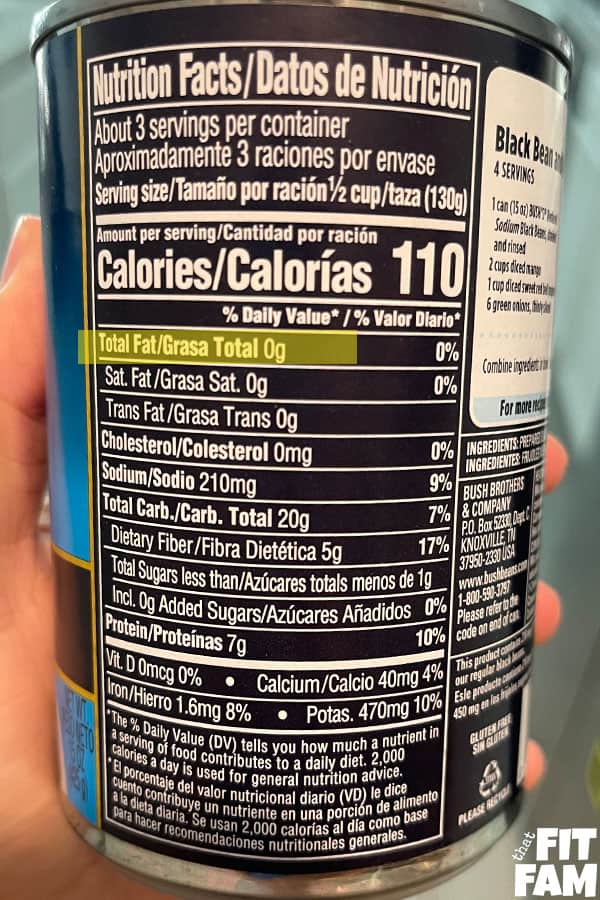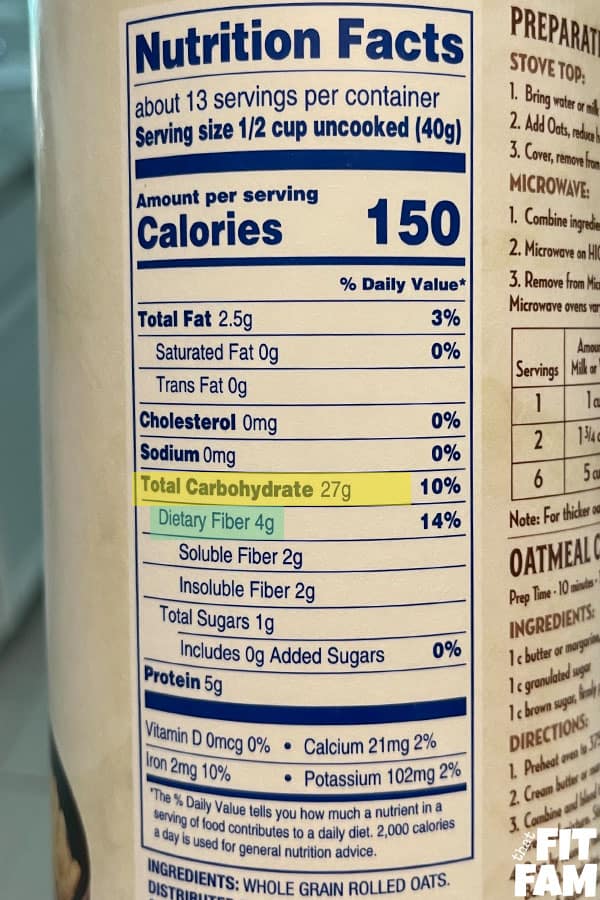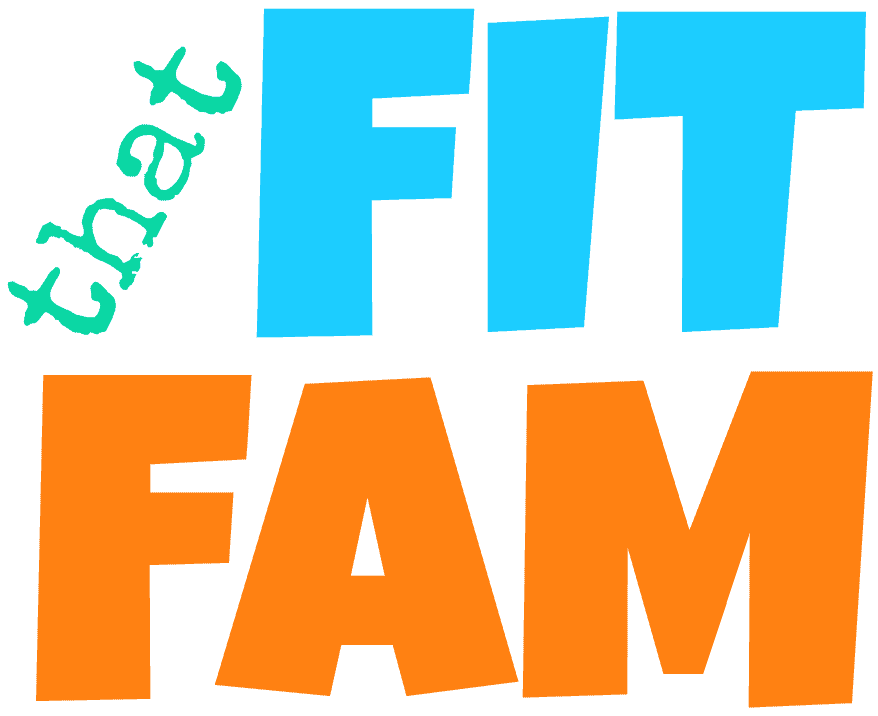In order to track macros, you need to be very familiar with nutrition labels. Most of the time you will just quickly scan them into a tracking app, but it is still useful to be able to read a nutrition label.
**I also explain this in video form on our TikTok
Key info on nutrition labels for macros
There’s a lot of information on there, but for IIFYM you only need to really focus on 4-5 things: serving size, protein, fats, carbs, and possibly fiber.

Yes, vitamins and minerals are important, but they are not tracked in IIFYM. We are only looking at what is tracked.
Fiber is optional because some people track their fiber intake. Women should aim for 21-25 g fiber per day and men around 30-38 g. The good news is that if you are hitting your fiber goals, you are probably getting in more nutrient dense food and hitting those micronutrients that we mentioned earlier.
Obviously for IIFYM, macronutrients are the priority for so many reasons, but micronutrients do make a difference as well. So a varied diet is important.
Serving size
The first thing to note is the serving size. This is where the label will tell you how many servings are in a container and more importantly, the amount of grams (or mL) each serving is.
If you are tracking accurately, you need to weigh your food with a food scale so this is key.
Protein
How many grams of protein are there per serving? Most people have a hard time hitting their protein goal. You’ll want to make sure you’re buying high protein foods.
Fats

How many grams of fat are there? Foods that are high in fat may be hard for you to work into your macros. Try to pick more moderate or lower fat items. Not necessarily foods labeled as “fat free,” but ones that are naturally lower in fat, like rice, beans, etc.
Carbs
A common question I get is whether we track net carbs. The short answer is no. So if you eat a serving, record that entire amount of carbs.
Fiber

This gets confused with the whole net carb thing as well. If you are tracking fiber, it is completely independent of the 3 macros you are hitting. You DO NOT subtract this from carbs. In this example, a serving has 27 carb of which 4 are fiber. Those 4 g do not affect your carb macros at all.
Other info regarding nutrition labels:
Ingredients
Ingredients in an item are listed on the nutrition label by weight. So if sugar is first on that list followed by oats, your food has more sugar than oats.
Percentage of vitamins
This is based on a 2,000 calorie diet.
Sodium
Pay attention to sodium. Foods high in sodium can add water weight. If you buy a lot of canned beans, opt for “no salt added.” Also, I’ve noticed foods using artificial sugars tend to be high in sodium.
Prepared vs unprepared
I always log my food as unprepared (if given the option on the nutrition label). I then add any additional foods I use in the cooking process separately.
Calculating how much you need
Say you come across a food that has 27 g carbs per serving (like the oats pictured earlier), but you only have 19 g carbs left to hit your goal. You need to have a partial serving. To calculate this divide your goal by the amount in the food.
So 19/27= .7
This means you should have only .7 of a serving.
Now multiply .7 by the weight of the food in grams per serving (located next to serving size). In the oats example you would multiply .7 by 40 g to make your ideal portion 28 grams of uncooked oats.
Now you have the exact weight of food to eat to hit your target. Enter it into MyFitnessPal as .7 of a serving!
